Building a fantastic NLP chatbot isn't easy. With so many deep learning frameworks, knowing which one is the right fit is tricky. That's where this guide comes in clutch.
We're diving deep into the heavyweights: TensorFlow and PyTorch. Sure, they're both rockstar frameworks, but they each bring something different to the table.
Choosing between them could make or break whether your chatbot pops off.
Maybe you're working on an enterprise-grade chatbot assistant and need a robust, mature ecosystem. Or perhaps you're a maverick researcher hungry for flexibility to experiment with cutting-edge architectures. Whatever your vibe, we'll explain it all.
Get ready to explore TensorFlow and PyTorch's unique strengths and weaknesses. By the end, you'll be equipped to create your best chatbot blueprint.
Let's get this below!
What is TensorFlow, and What is its Role in NLP Chatbot Development?
TensorFlow is a widely used open-source machine learning framework crucial in NLP chatbot development.
At its core, TensorFlow is a powerful library allowing developers to build and train machine learning models quickly.
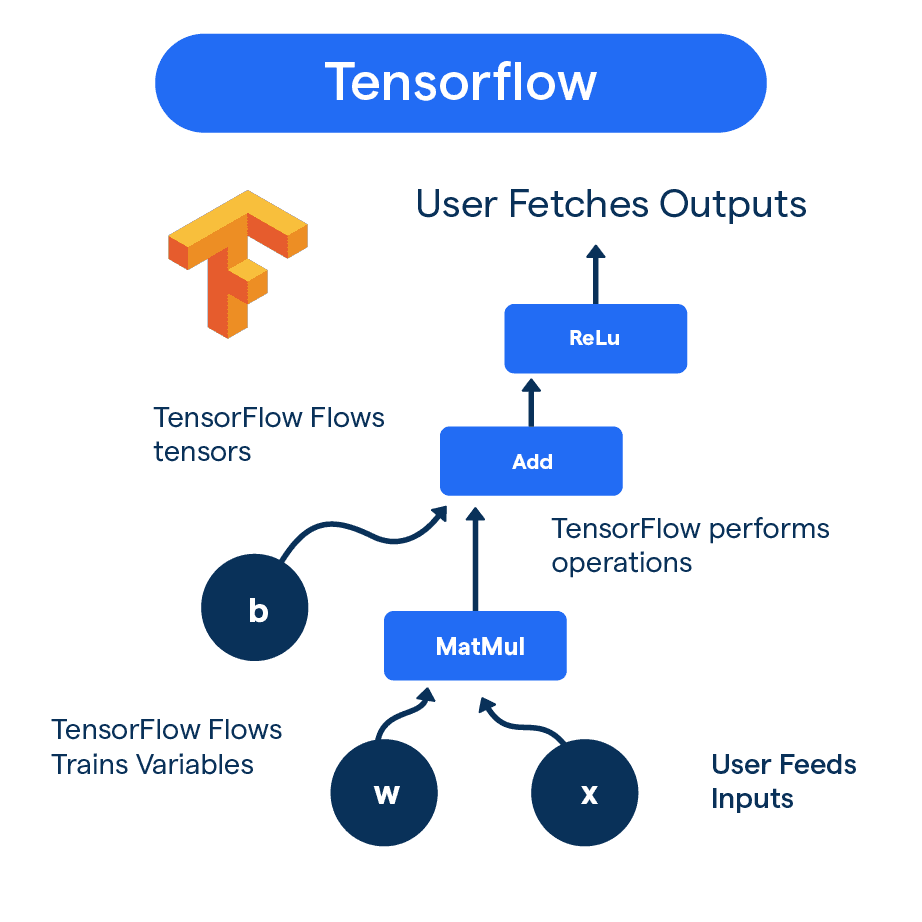
For NLP chatbot development, TensorFlow provides the necessary tools and resources to process and analyze large amounts of text data efficiently.
It offers a wide range of functionalities, including natural language processing, sequence modeling, and deep learning, making it suitable for various applications in the chatbot domain.
Key Features and Advantages of TensorFlow
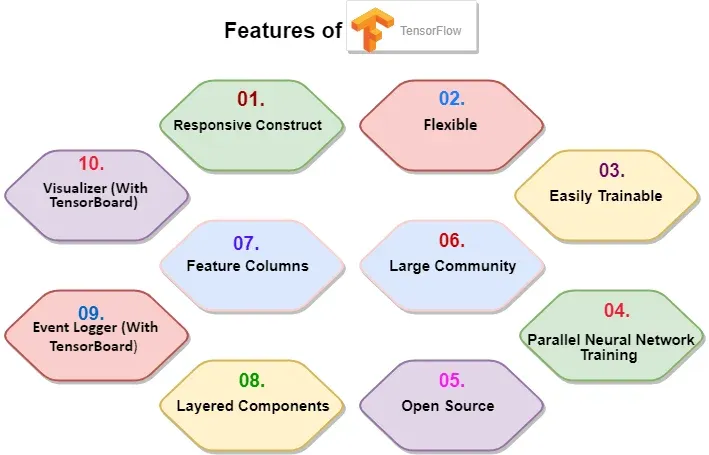
- Flexible Architecture: TensorFlow offers a flexible architecture that allows developers to define complex models using a high-level API.
This flexibility enables easy customization and adaptation for different NLP tasks.
- Large Community and Ecosystem: TensorFlow has a vast community of developers and researchers who actively contribute to its growth.
This extensive ecosystem ensures continuous improvement, frequent updates, and a wide range of pre-built models and resources available for NLP chatbot development.
- Scalability: TensorFlow is designed to work efficiently with small and large-scale projects. It provides distributed training capabilities, which enable seamless scaling across multiple GPUs or even distributed clusters for training large chatbot models.
- TensorBoard Visualization: TensorFlow comes with a built-in visualization tool called TensorBoard. This tool allows developers to monitor training progress, visualize model architectures, and debug their models, making it easier to understand and optimize the performance of NLP chatbot models.
Examples of Successful Applications Using TensorFlow for NLP chatbots
- Neural Machine Translation: TensorFlow has been used to build successful NLP chatbots that excel in translating text between different languages.
By leveraging its powerful deep learning capabilities, TensorFlow enables chatbots to understand and generate human-like translations.
- Sentiment Analysis: Sentiment analysis is a critical component of NLP chatbot development.
TensorFlow has been utilized in building chatbots that can accurately classify the sentiment of user inputs, allowing them to respond accordingly and provide a personalized user experience.
- Named Entity Recognition: TensorFlow models have proven effective in NLP chatbots that perform named entity recognition tasks.
These chatbots can identify and extract meaningful information such as names, locations, and dates from user queries, enabling more sophisticated and context-aware conversations.
Limitations or Challenges with TensorFlow
- Steep Learning Curve: TensorFlow, a robust and extensive framework, can have a steep learning curve for beginners.
However, TensorFlow's documentation and community support help mitigate this challenge.
- Hardware Intensive: TensorFlow's advanced features and capabilities often require significant computational resources.
Training complex NLP chatbot models on large datasets may require access to high-performance hardware, such as GPUs or TPUs, which can be a limitation for some developers.
- Debugging and Optimization: As with any complex software framework, debugging and optimizing TensorFlow models can be challenging.
Developers must invest time in understanding TensorFlow's debugging tools and optimization techniques to ensure optimal performance of their NLP chatbot models.
Next, we will understand PyTorch.
What is PyTorch, and What is its Relevance to NLP Chatbot Development?
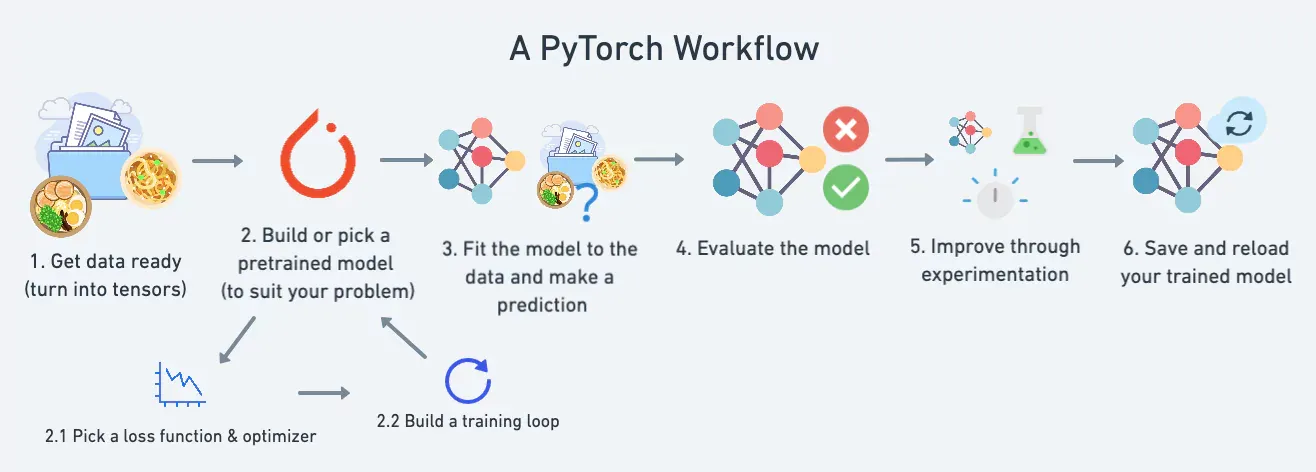
PyTorch is a popular open-source machine learning framework with significant traction in NLP chatbot development.
PyTorch is a dynamic, lightweight library focusing on flexibility and ease of use.
It provides a smooth interface for developers to build and train machine learning models, particularly in natural language processing (NLP).
With its strong support for dynamic computation graphs and seamless integration with Python, PyTorch has become a preferred choice for NLP chatbot development.
Unique Features and Benefits of PyTorch
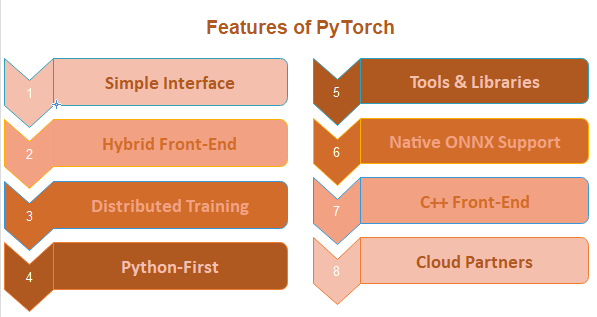
- Dynamic Computation: PyTorch differentiates itself from other frameworks by offering a dynamic computation graph.
This allows developers to modify the model architecture and flow during runtime, making experimenting and iterating on NLP chatbot models easier.
- Pythonic Interface: PyTorch has a simple and intuitive Pythonic interface that makes it user-friendly.
Developers can leverage their existing Python knowledge and utilize Python's extensive ecosystem of libraries for data manipulation and visualization, enhancing the development process of NLP chatbots.
- User-Friendly Debugging: PyTorch provides excellent debugging capabilities. Developers can take advantage of PyTorch's dynamic nature to inspect intermediate variables, gradients, and computations easily, helping to identify and resolve issues with the NLP chatbot models efficiently.
- Strong GPU Support: PyTorch enables seamless integration with GPUs for accelerated training and inference.
Its GPU support and efficient memory management allow developers to train complex NLP chatbot models faster and handle large-scale datasets more effectively.
Examples of Successful Implementations Using PyTorch in NLP chatbots
- Question Answering: PyTorch has been utilized to build NLP chatbots designed to answer complex questions.
By leveraging PyTorch's comprehension and text understanding capabilities, these chatbots can provide accurate and context-aware responses to user queries.
- Language Generation: PyTorch is commonly used for building chatbots that generate natural language text. These chatbots can generate coherent and contextually grounded responses by learning from vast training data, enhancing the conversational experience.
- Text Classification: PyTorch shines in tasks such as sentiment analysis and text classification in NLP chatbot development.
Using PyTorch's flexible neural network modules, developers can create accurate classifiers that categorize user inputs and enable chatbots to respond appropriately.
Limitations or Potential Drawbacks of PyTorch
- Lack of Pre-trained Models: PyTorch has a relatively minor repository of pre-trained models for NLP tasks compared to some other frameworks.
However, this limitation can be mitigated by leveraging transfer learning techniques or by utilizing pre-trained models available in other frameworks and converting them to work with PyTorch.
- Steep Learning Curve: While PyTorch is undoubtedly user-friendly, mastering certain advanced concepts and techniques may require a steep learning curve for beginners.
However, PyTorch's extensive documentation and active community provide resources to help developers overcome this challenge.
- Deployment Challenges: Due to the framework's dynamic nature, deploying PyTorch models in production environments can be challenging.
However, PyTorch provides options for converting models to more deployable formats, such as ONNX, which can ease deployment.
Next, we will cover how to choose the right framework.
Choosing the Right Framework
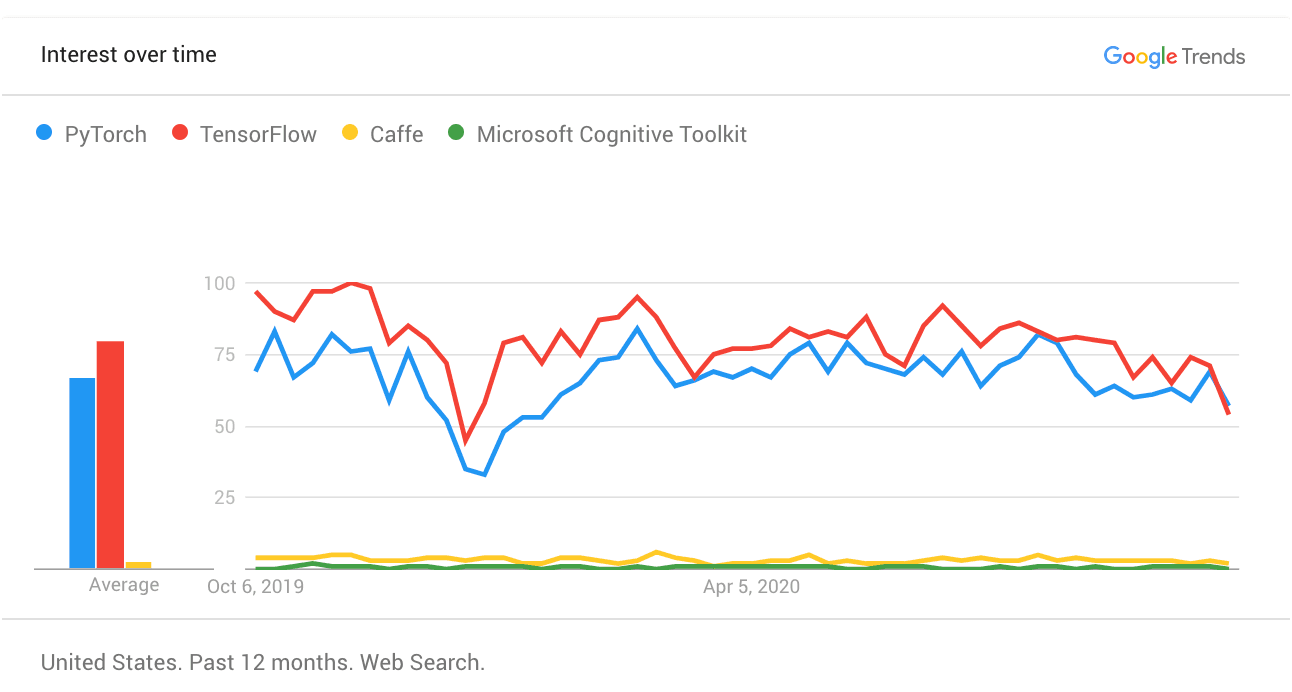
Selecting the right framework is crucial when developing NLP chatbots. TensorFlow and PyTorch are two popular choices in the field.
In this article, we'll explore the strengths and weaknesses of both frameworks, discuss the factors to consider when choosing a framework for NLP chatbot development and provide recommendations based on specific use cases and requirements.
Strengths and Weaknesses of TensorFlow and PyTorch
Choosing the right deep learning framework can make or break your chatbot's success.
Dive into the battle of TensorFlow vs. PyTorch – two titans in the AI world. Uncover their unique strengths and weaknesses, and discover which one reigns supreme for your NLP chatbot project.
Get ready for an insightful journey to help you navigate the intricate world of deep learning frameworks like a pro.
TensorFlow
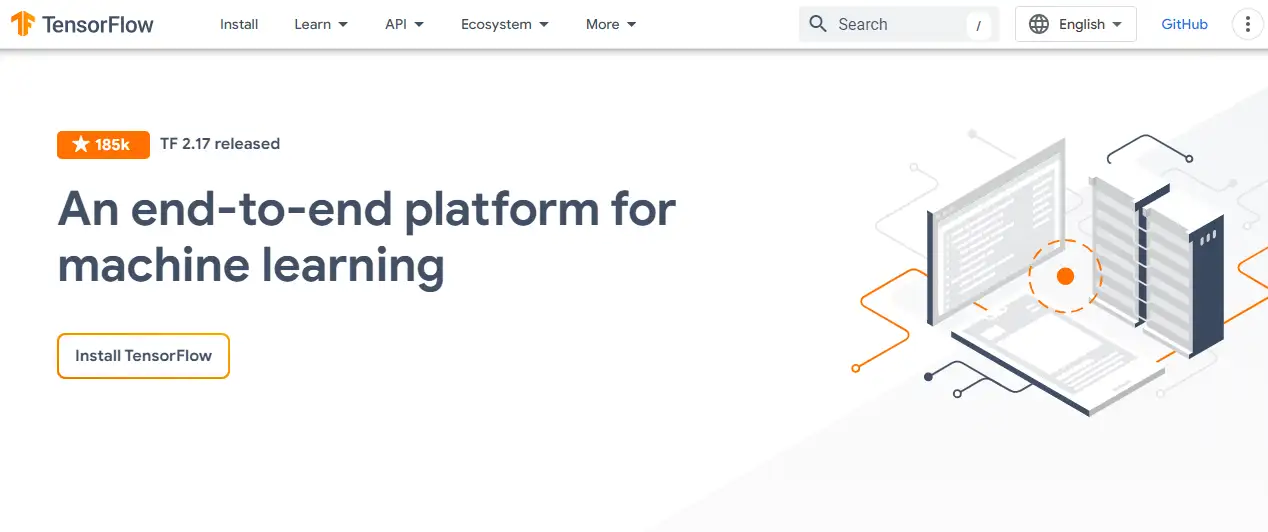
Below are the strengths and weaknesses of TensorFlow.
Strengths:
- Mature Ecosystem: TensorFlow has a large and mature ecosystem with extensive documentation, a thriving community, and support for various devices and platforms.
This makes it a reliable choice for NLP chatbot development, especially in enterprise settings.
- High-level APIs: TensorFlow provides high-level APIs like Keras and TensorFlow.js, which simplify the development process and make it accessible to developers with varying levels of expertise.
Suggested Reading:
TensorFlow vs TensorFlow GPU
Weaknesses:
- Steep Learning Curve: TensorFlow has a steeper learning curve, particularly for beginners in machine learning.
Its extensive set of features and low-level capabilities require users to have a solid understanding of underlying concepts.
- Static Computation Graph: TensorFlow uses a static computation graph, which means the graph structure is defined upfront and cannot be modified during runtime.
This can restrict flexibility while developing chatbots that demand dynamic architectures.
PyTorch
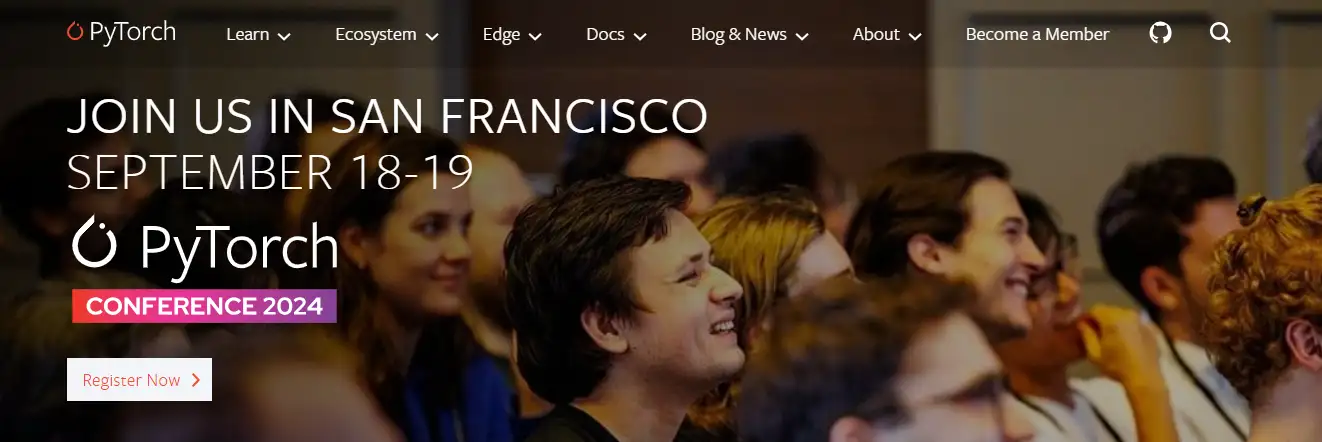
Below are PyTorch's strengths and weaknesses.
Strengths:
- Dynamic Computation Graph: PyTorch is built around a dynamic computation graph, allowing developers to modify the architecture and behavior of the model during runtime.
This flexibility is valuable for experimental NLP chatbot development.
- Pythonic Interface: PyTorch offers a Pythonic interface, making it easy for developers to prototype and experiment.
Its seamless integration with Python's existing libraries ensures a smooth flow of data manipulation and visualization.
Weaknesses:
- Limited Pre-trained Models: While PyTorch has an active community, its repository of pre-trained models for NLP is smaller than TensorFlow's.
However, transfer learning can help mitigate this limitation.
- Deployment Challenges: PyTorch's dynamic nature can make deployment in production environments more challenging.
However, PyTorch provides ways to convert models into deployable formats like ONNX to overcome this hurdle.
Suggested Reading:
Building Smart Chatbots with PyTorch
Factors to Consider When Selecting a Framework for NLP Chatbot Development
- Project Requirements: Consider the specific requirements of your NLP chatbot project, such as the complexity of the model, scale of data, and desired performance.
This will help you choose a framework that aligns with these requirements.
- Familiarity and Expertise: Assess your team's familiarity and expertise with the frameworks. PyTorch might be a good fit if your team is more comfortable with Python and has experience in dynamic graph-based models.
On the other hand, if your team has a strong software engineering background and prefers a more established ecosystem, TensorFlow might be a better choice.
- Community Support: Evaluate the size and activity of the community surrounding the framework. A larger community ensures better support, availability of resources, and potential contributions and improvements to the framework.
Recommendations Based on Specific Use Cases and Requirements
- TensorFlow for Enterprise Applications: If you are working on a large-scale NLP chatbot project for an enterprise, TensorFlow's mature ecosystem, extensive documentation, and community support make it an excellent choice. Its high-level APIs like Keras, simplify the development process.
- PyTorch for Research and Prototyping: If your project requires experimental architectures, flexible computations, and ease of experimentation, PyTorch's dynamic nature and Pythonic interface make it an ideal choice. It is also suitable for small to medium-sized projects with limited pre-existing ML infrastructure.
Conclusion
Ultimately, choosing between TensorFlow and PyTorch for your NLP chatbot project isn't a one-size-fits-all decision.
It depends on your specific needs and goals. TensorFlow is the stalwart choice if you need a mature ecosystem with excellent documentation and scalability for an enterprise-level app.
The high-level APIs make it relatively approachable too. But if research and experimentation are priorities, PyTorch's flexibility and intuitive Python integration give it an edge. It shines for prototyping new architectures.
Whatever you choose, this guide has your back. We broke down the pros and cons to help you choose your project best.
Don't stress about mastering the nuances of these powerful frameworks alone, either. Both have great communities and resources to lean on. Just focus on building something innovative that wow your users!
With the right tools in your arsenal, the world of conversational AI is your oyster.
Suggested Reading:
PyTorch Vs No Code Chatbot: Pros and Cons of Each Solution
Frequently Asked Questions (FAQs)
Which framework is more beginner-friendly for NLP chatbot development: TensorFlow or PyTorch?
PyTorch is often considered more beginner-friendly for NLP chatbot development due to its intuitive API and dynamic computation graph, which simplifies model building and experimentation compared to TensorFlow's static graph.
What are the performance differences between TensorFlow and PyTorch in NLP chatbot applications?
Both TensorFlow and PyTorch offer high-performance capabilities for NLP chatbot applications.
TensorFlow's optimized graph execution may provide better performance for certain tasks, while PyTorch's dynamic computation graph offers flexibility and ease of experimentation.
Which framework offers better community support for NLP chatbot development: TensorFlow or PyTorch?
TensorFlow boasts a larger and more established community with extensive resources, tutorials, and documentation for NLP chatbot development.
PyTorch's community is rapidly growing and is known for its active engagement, particularly in research and experimentation-driven projects.
What are the considerations for choosing between TensorFlow and PyTorch for NLP chatbot development?
Consider factors such as ease of use, performance, community support, ecosystem, scalability, and project requirements.
Choose TensorFlow for robust production capabilities and established support, while opting for PyTorch for flexibility, ease of experimentation, and customization in NLP chatbot development projects.
Can TensorFlow and PyTorch be used interchangeably in NLP chatbot development, or are they suited for different use cases?
While TensorFlow and PyTorch can achieve similar results in NLP chatbot development, they have distinct strengths and weaknesses.
TensorFlow excels in production-ready deployments and large-scale applications, while PyTorch offers flexibility, ease of use, and customization for research-oriented or experimental projects. Choose based on project requirements and constraints.


